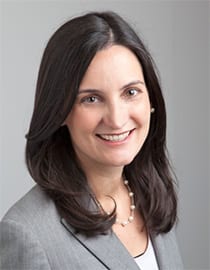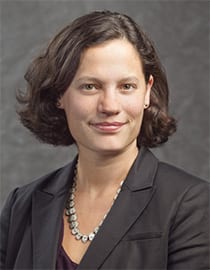By Leslie Gordon

In the last 20 years, electronic monitoring of youth in the juvenile justice system has proliferated. Although generally perceived as a less punitive alternative to incarceration, electronic monitoring is still burdensome: it may entail home confinement, invasive surveillance, compliance with dozens of rules, and high fees. Despite the widespread use of this technology, little research exists about how juvenile electronic monitoring programs work in practice—until now.
A collaboration between the Samuelson Law, Technology & Public Policy Clinic at Berkeley Law and the East Bay Community Law Center (EBCLC) has resulted in a new report: Electronic Monitoring of Youth in the California Juvenile Justice System. It’s the first report to analyze juvenile electronic monitoring programs statewide.
“Electronic monitoring has become commonplace in the juvenile justice system, so it’s surprising how little we know about its impact,” said Catherine Crump, director of the Samuelson Clinic. “There aren’t any standard practices for when youth should be tracked, or guidelines for how to use these programs effectively, or really much information about how this technology is being deployed.”
Kate Weisburd, director of EBCLC’s Youth Defender Clinic, which represents young people in delinquency cases, noticed that clients struggled on electronic monitors and were repeatedly re-incarcerated for violations. The monitoring appeared to “undermine the rehabilitative purpose of juvenile court,” she said.

Eager to learn more, Weisburd sought out Crump and the clinic—known for its expertise in surveillance. In particular, the Samuelson Clinic has spearheaded research into online privacy, police use of body cameras, data security and related issues.
Report findings
Two years in the making, the report is based on information gathered from all 58 California counties about the rules youth must follow while being monitored electronically. “We learned that the monitors may be setting kids up for failure,” Crump said. “The terms are too onerous, kids are monitored for too long, and the rules are arbitrarily enforced.”
According to the report, many young people wearing electronic monitors are only allowed to leave the house to attend school, and must obtain special permission days in advance for medical appointments, sports or other outdoor events. Overall, the programs raised privacy concerns, were often too vague or overly rigid, and disproportionately burdened youth of color and low-income families.
“We learned that the monitors may be setting kids up for failure,” Crump said. “The terms are too onerous, kids are monitored for too long, and the rules are arbitrarily enforced.”
“In general, teenagers are impulsive; they have a lot of energy and crave social connections, and this makes the isolation of house arrest such a challenge. Perfect compliance with the myriad of rules is also hard, and so our clients often cycle in and out of custody for technical violations,” Weisburd said.
Many of the electronic monitoring requirements fail to account for adolescent development and are rarely tailored to the specific needs of individual youth. One EBCLC client, on probation for shoplifting, suffered from cognitive impairments and a learning disability. He was electronically monitored for seven months and jailed ten separate times for either a monitoring or probation violation—never a new offense. In total, he was detained in juvenile hall for three and half months, including Christmas and his birthday. “It was incredibly damaging psychologically and undermined his ability to get back on his feet,” Weisburd said.
Leading the charge
Law and graduate students conducted in-depth research for the report, interviewing current and former probation officers, public defenders and other legal experts. Students also gathered voluminous data and filed public records requests to learn how electronic monitoring works across the state.

Chieh Tung ’17 worked on the report for two semesters. “It gave me the opportunity to do more field work than you typically get in the classroom. We got to do a lot of fact-gathering activities that are more investigative,” Tung said. “It gave me some insight as to how difficult it can be to get information from government entities, and how much work goes into carefully drafting records requests and seeking compliance.”
Rena Coen, who earned a master’s degree from the UC Berkeley School of Information in 2016, was Tung’s partner. “Participating in this project as a Samuelson Clinic student was easily one of the highlights of graduate school,” she said. “To be given the opportunity for experiential learning rather than working with hypotheticals or analyzing from afar added an urgency and passion to the work.”
The report is part of an on-going collaboration between EBCLC and the Samuelson Clinic to uncover and ultimately reform the way that electronic monitoring is used in juvenile court. The joint effort also highlights the value of connecting direct service work to policy work.
“The two can’t happen in a vacuum,” said Weisburd. “Pairing the direct youth advocacy work that we do at EBCLC with the policy and technology expertise of the Samuelson Clinic means we are able to do so much more.”
Home page photo courtesy of SCRAM Systems.